Model AT Linear Anode System by EDI

- For Underground Tanks and Above Ground Tank Bottoms
-
Description
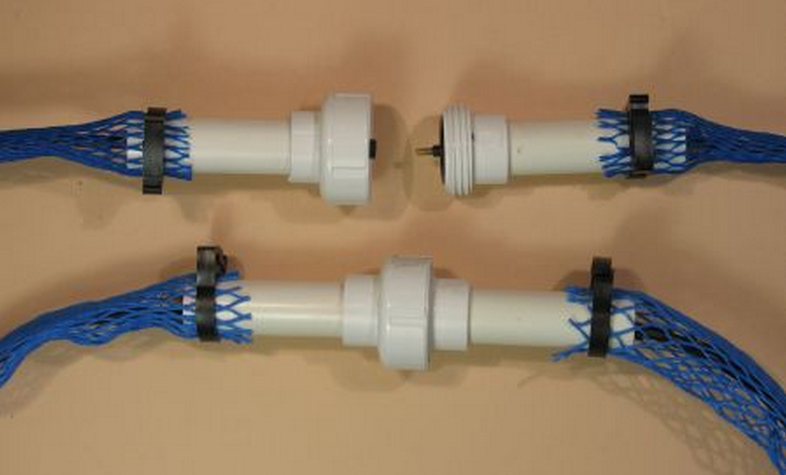
Typical Applications
- Underground and above ground storage tanks, burried pipelines, elevator shafts, marine structures
Features
- Design flexibility - modular design permits multitude of anode configurations.
- Rapid installation - no filed splices or weldments
- Leight weight - very easy to ship and handle
Design Compatibility
The Model AT is an impressed current linear anode system which permits maximum design flexibility. It consists of a copper cored titanium flat wire coated with mixed metal oxide and attached to a #14 AWG HMW/PE insulated bus wire. The wire pair is surrounded by a flexible plastic mesh. Individual anodes are 50 ft. long and are easily connected in the field to form a hermetically sealed joint. This allows the design engineer to choose a layout which is best suited for the application.
Perhaps the most significant feature of the Model AT is its unique connector system. Each anode is supplied with a pin connector on one end and a socket connector on the opposite end which can be mated either to another anode section to form a string or to a power feed cable. Specially developed "tee" connectors allow intermediate current feeds on long strings. These connectors are designed for underwater cable connections and are being used successfully on other EDI products in turbulent aqueous solutions. All connections are factory made and sealed which means that there are no splices or weldments required in the field. Installation can be completed in substantially less time than any other system. For example, it takes less than 6 man-hr. to install this anode system in a 60 ft diameter tank.
NACE Paper
Installation of an Instrumented Cathodic Protection System on a Large Diameter AST
Paper #03200 presented at Corrosion 2003. ©NACE International 2009. Reproduced with permission from NACE International, Houston, TX. All rights reserved.
Connector Specifications
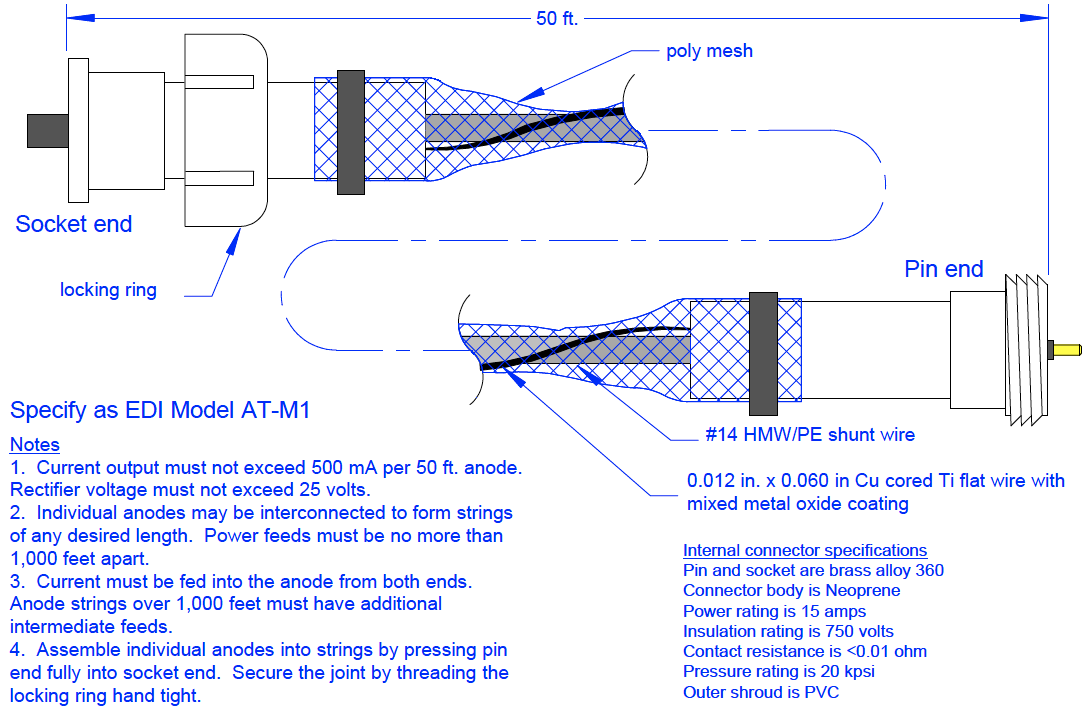
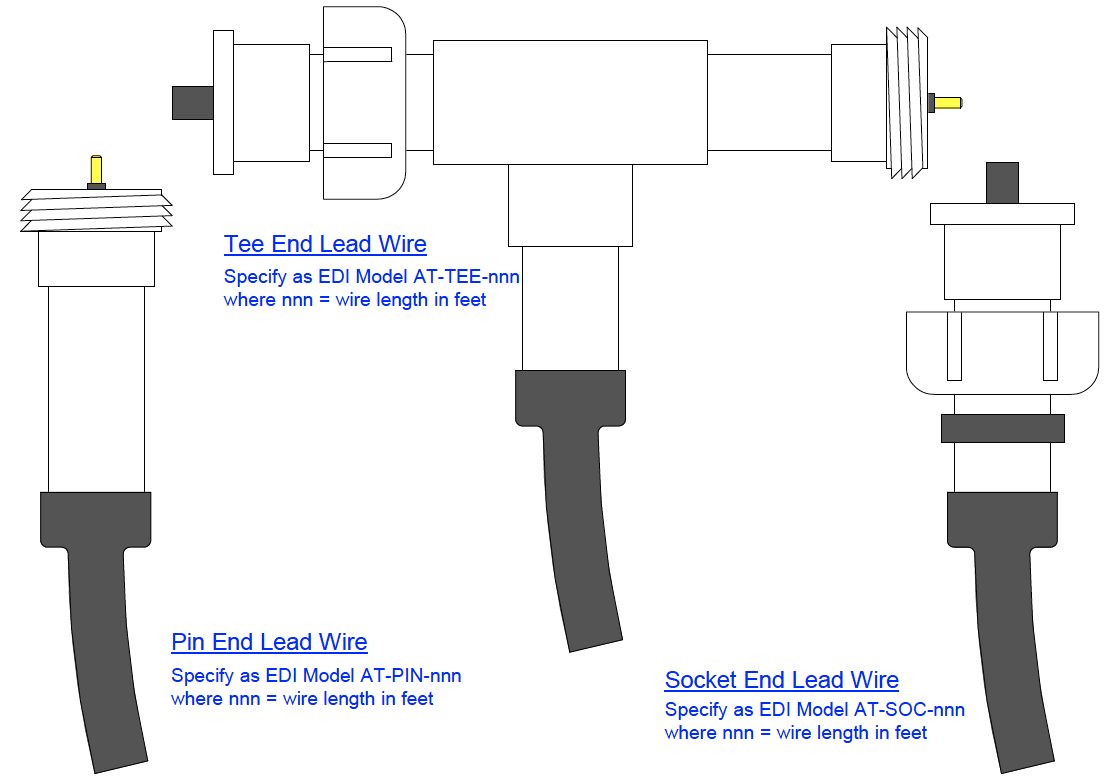
Pin & socket material*
Brass Alloy 360
Connector body
Neoprene
Current rating
15 Amps
Insulation rating
750 Volts
Minimum insulation thickness
0.040"
Contact resistance
< 0.01 ohm
Insulation resistance
> 200 megohm after wet mating
Pressure rating
20 kpsi
Rated number of wet matings
500
Connector shroud material
CPVC
*The terms Pin and Socket refer to the brass connector, not the CPVC shroud. - Underground and above ground storage tanks, burried pipelines, elevator shafts, marine structures
-
Installation
Anode Layout
The anode should be placed as deep as possible, preferably, directly on the polymer liner. Shallower placements will reduce the spread of CP current. Begin the layout at the ring wall next to the access port and work toward the center of the tank. When using a stepped spiral array, the first loop will be a complete circle located at half the anode spacing distance, s, away from the ring wall. At the end of this loop, the anode steps over to start the second loop located a distance s from the first loop. The radius of the bend between the loop and the step shall be no smaller than 6 inches (15 cm) to avoid damaging the anode. The step does not have to be perpendicular to the anode; an offset of 30Åã to 45Åã is optimum. When using other array designs, layout details should be as specified by the CP system designer. Embedded reference electrodes should be placed mid-way between anode strings. Other sensors, such as 4-wire resistivity probes or ER probes, should be located close to the reference electrodes. Anode power leads are connected to both ends of the anode strings. Tee-end lead wires are used to provide intermediate power feeds. Distance between power feeds must not exceed 1000 feet (300 m). Remove the protective vinyl caps when ready to connect individual anode sections or power feeds. Press the ends firmly together to ensure the connector is fully seated; the PVC housing flanges should be about 1 – 2 mm apart. Tighten the securing nut hand tight. Anodes can be held in position by either directly taping the joints to the polymer liner or using small sandbags. Cover the anode by pouring fine dry sand directly on the mesh and ensuring that it penetrates to encapsulate the anode. The sand should be finer than 0.6 mm (#30 sieve) and cover the mesh by about . inch (1.5 cm). When doing end-to end continuity checks, each anode has a resistance of about . Ω; lead wire resistance is about . Ω per 100 ft. (30 m).
Backfilling and Installing Tank Floor
The anode array is covered with sand to the depth specified by the CP system designer. If the sand is too dry, this can cause problems during commissioning because the resistivity will be too high to permit passage of adequate current to polarize the tank bottom. Adding moisture to the sand after it has been graded but before the floor has been installed will make it possible to properly commission the system.
Note:
All cathodic protection systems can be easily damaged at this stage of construction. If mechanized equipment is used, extreme care must be taken to ensure that the system is not damaged. Wires can be severed, reference electrodes can be crushed, and sections of the anode can be dragged out of their intended position. The CP installer should continuously monitor electrical continuity on the anode circuits during sand installation so that any damage can be located and quickly corrected.
Commissioning
Before commissioning the system, there must be sufficient product in the tank to ensure that the bottom is in complete contact with the sand. If the sand bed is damp enough to conduct current, the system can be commissioned by setting the rectifier to produce the desired shift in the tank floor potential. Once that has been attained, no further adjustment should be made to the rectifier output voltage. Note: rectifier voltage should not exceed 25V. As the system operates, the sand will dry out making the environment less corrosive. When this happens, current output will be reduced. When the sand re-wets due to rain or flooding, the current will return to the level necessary to provide protection.
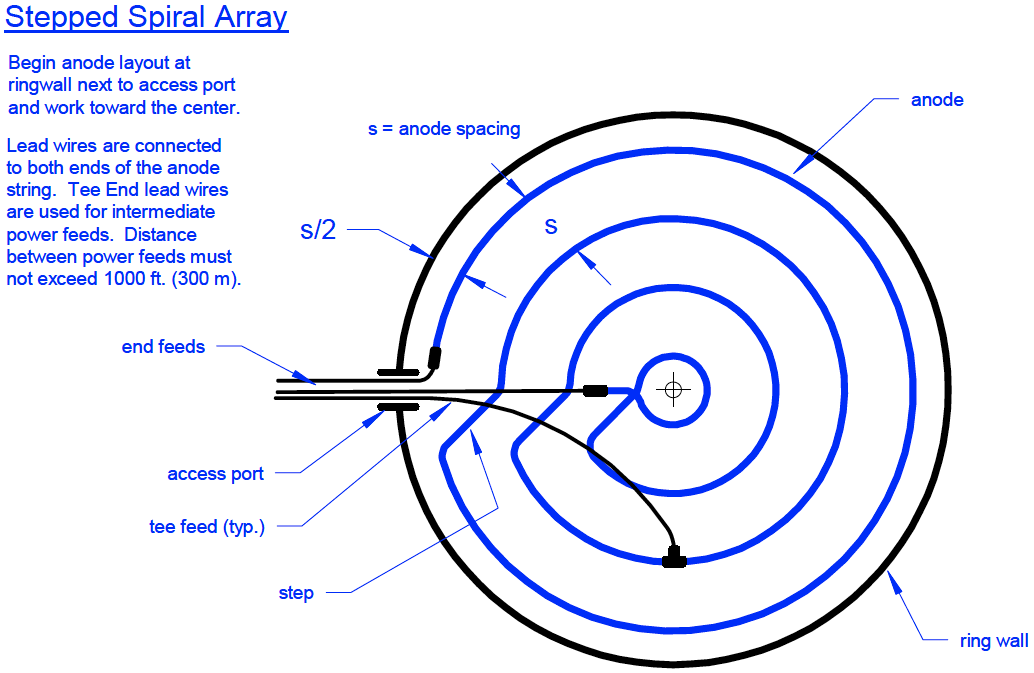
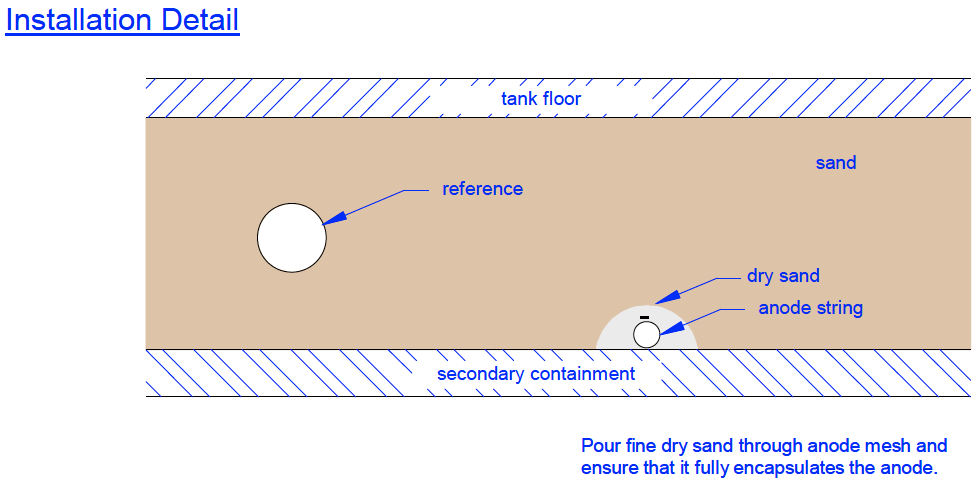
-
